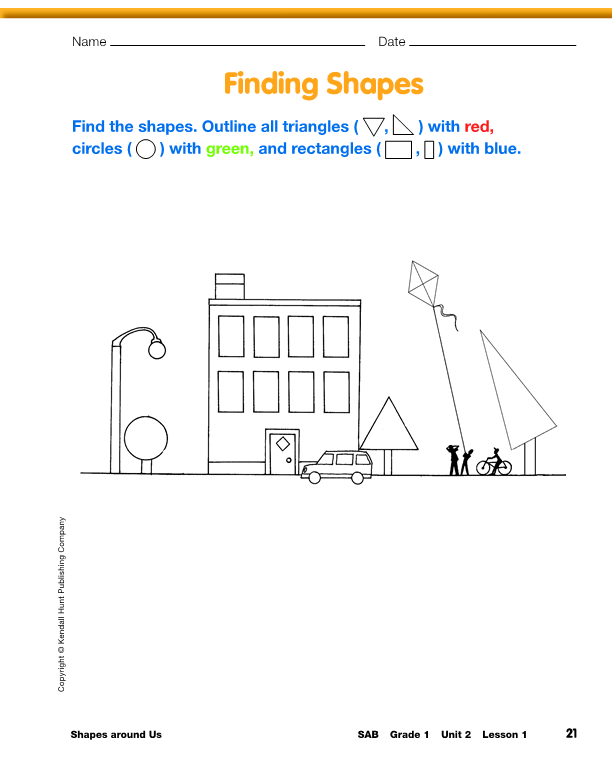Attach students' drawings to the appropriate charts. Ask
the class to look carefully at the charts and think about the
shapes they see. Discuss the charts to summarize the big ideas of
the lesson: identifying and describing shapes.
- How are all the [shape's name] alike? (All the
shapes on this chart have the same number of sides and
corners.)
- How are they different?
- How are the [shape's name] different?
See Figure 3 for possible responses for each chart.
Continue by comparing and contrasting different shapes.
- How are circles different from all the other
shapes? (They are curved. They don't have straight sides.
They don't have corners.)
- What is similar about some of the other shapes? (They
all have corners and straight sides.)
- If all the other shapes have corners and
straight sides, how are those shapes different from each
other? (Possible responses: Some have four sides like
rectangles, squares, and rhombuses; some have more sides, some
have fewer sides. The corners are different shapes, except the
corners on the rectangles and squares have the same shape. The
rectangles and squares look the same as each other except they
are different sizes, but not all the other shapes look the
same, like on the rhombuses one corner looks smaller than the
other.)
- Which shapes on the charts have the fewest
drawings? Which has the most? Why do you think that happened? (Possible
response: The trapezoids, rhombuses, and hexagons don't have a
lot of drawings because they are hardest to find. The circles,
squares, and rectangles have a lot because a lot of things use
those shapes.)
- If we looked somewhere else for these shapes,
would the same shapes be found often? (Answers will vary.
Possible response: I think triangles can be found more often
on the playground.)
Ask students to complete the Finding Shapes page in the
Student Activity Book that depicts geometric shapes in the
environment.
Use the Finding Shapes page to assess students' abilities
to identify two-dimensional shapes [E1].
To provide targeted practice, ask students to make a book
of shapes using pictures cut from magazines and newspapers.
Place the resources in a learning center.















